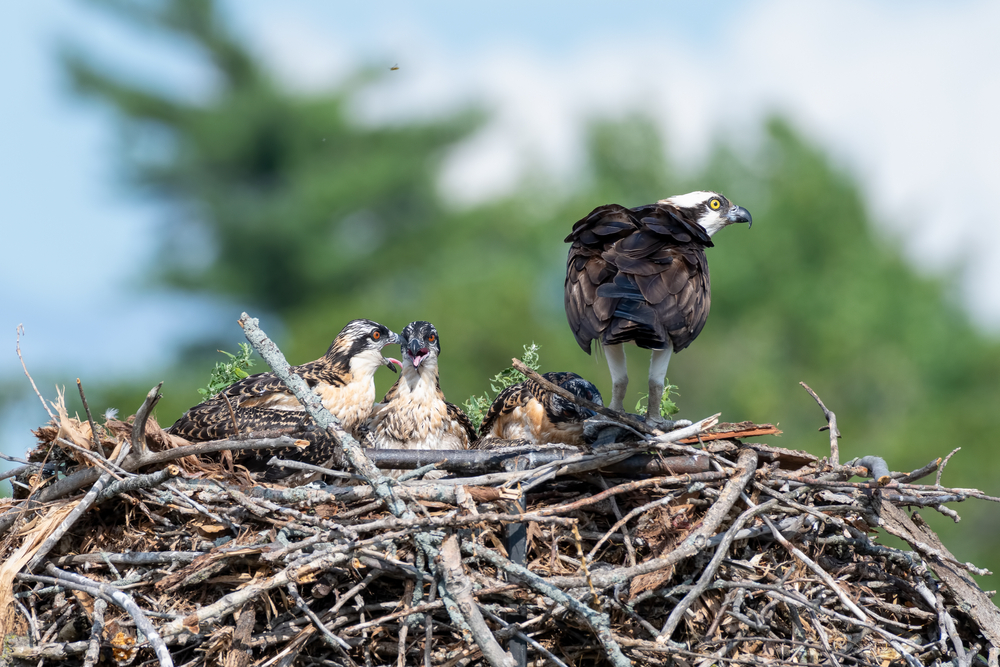May 14, 2024 at 9:25 am
One of Maine’s Most Talented Anglers and Most Visible Nesters
The high-pitched repetitive whistle of the osprey is a recognizable sound around the open waters of Maine. Birdwatchers, kayakers, and anglers are all familiar with the splash of this raptor’s impressive dive, and the aerodynamic way in which they grasp their catch with curved talons and hoist it back to their perch under bowed wings. Once recognized as Endangered or Threatened in many other northeastern states, ospreys have never been listed in Maine. They are protected under the Federal Migratory Bird Treaty Act. Here, they are abundant, widely distributed, and highly visible.
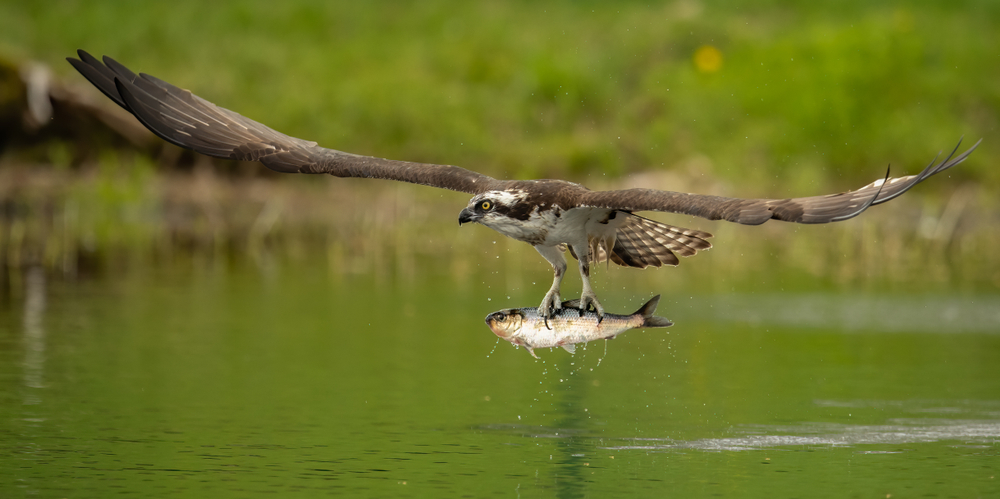
In addition to their piercing call, dynamic flight, and reflective white head, what makes this bird so conspicuous is their nesting behavior. Together, pairs build impressively large stick nests elevated high out of reach of predators on top of tree snags, in large forks in tree trunks, cliffsides, or human-built structures such as buildings or utility poles. The osprey’s adaptability is a key reason a healthy population thrives across our state. They have done well to adjust to a world in which they must increasingly navigate around human activity and can make use of any tall and sturdy structure in open areas near productive shallow water fishing opportunities. However, in many cases, the best perceived available option for nesting is a transmission tower.
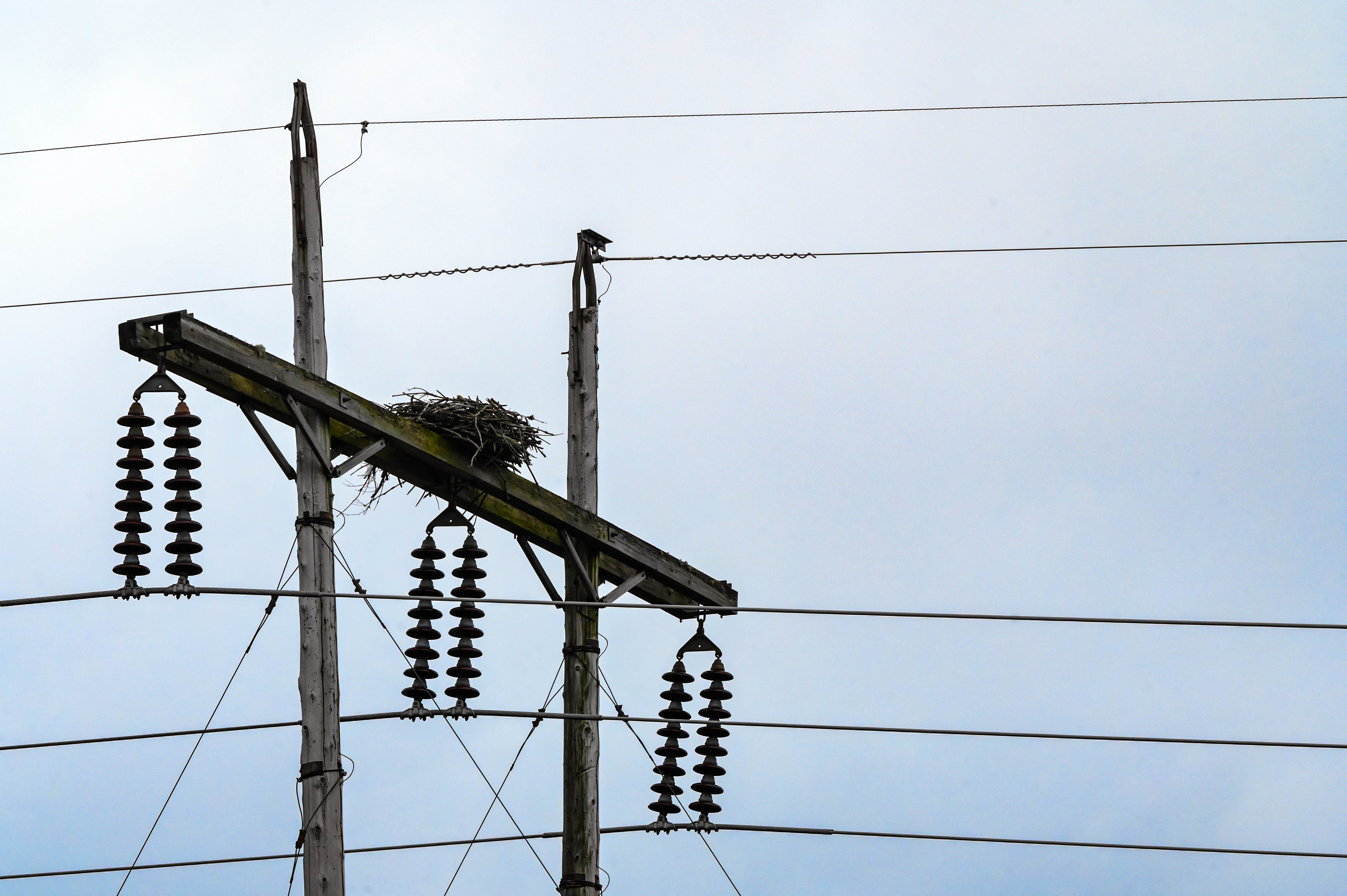
Sparks, Arcs, and Fire
Unfortunately, transmission tower nests can be problematic both for the birds and for people. One hazard for osprey who live and nest near live wires is electrocution. Juvenile birds have at particularly high risk in high voltage homes because they clumsily move about the nest, excitedly exercising their young wings to prepare for eventual flight. Another hazard that affects both osprey and people is fire. Nests are constructed of dead sticks and lined with other materials such as bark and grasses. Accumulation of such flammable materials around energized wires increases the probability of ignition which occurs when nesting material causes dangerous arcing or when debris falls and damages lines. The resulting fire not only has a disastrous effect on the birds, but it also damages expensive equipment and negatively affects our communities. Power outages caused by nests on utility structures occur several times each year, impacting thousands of customers.
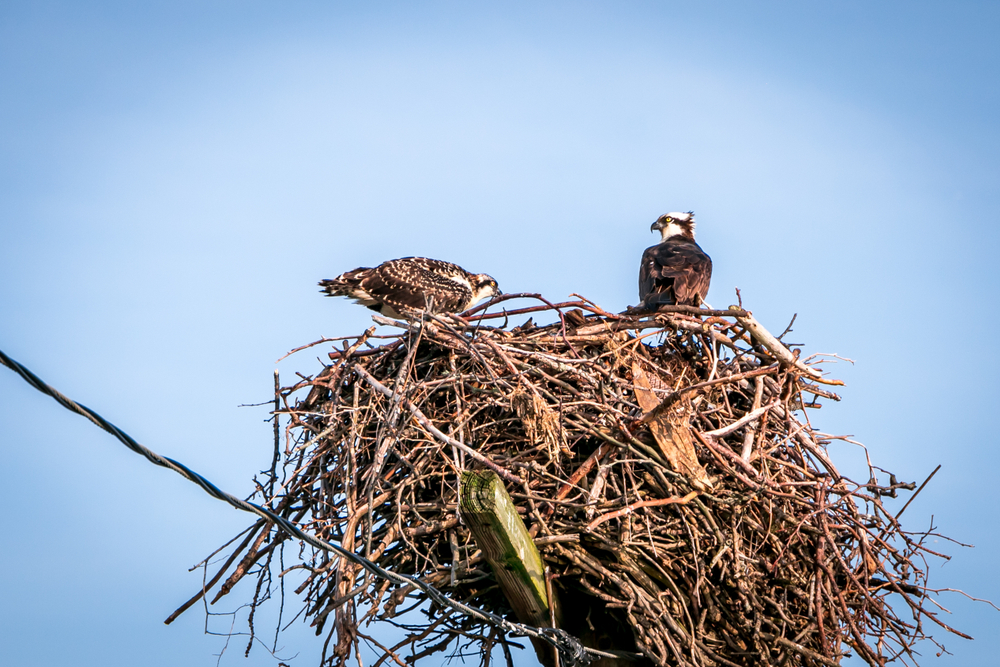
Finding Solutions for Birds and People
With the interests of both osprey and human communities in mind, some situations require removal of osprey nests from structures such as transmission towers. Removal of nests before eggs or young are present and the addition of structures to discourage future nesting is currently the most ethical and reliable method of prevention.
Removal of nests and the addition of structural deterrents is the best way to physically eliminate the hazard now and in future seasons and has minimal impact on ospreys thanks to their perseverance and adaptability.
Whether an osprey’s nest is destroyed by a natural weather event or dismantled by a line crew, a second attempt will very likely be made. With their first-choice location blocked, the pair will choose a secondary site that is also tall, sturdy, and in an open area near a dependable fishing spot.
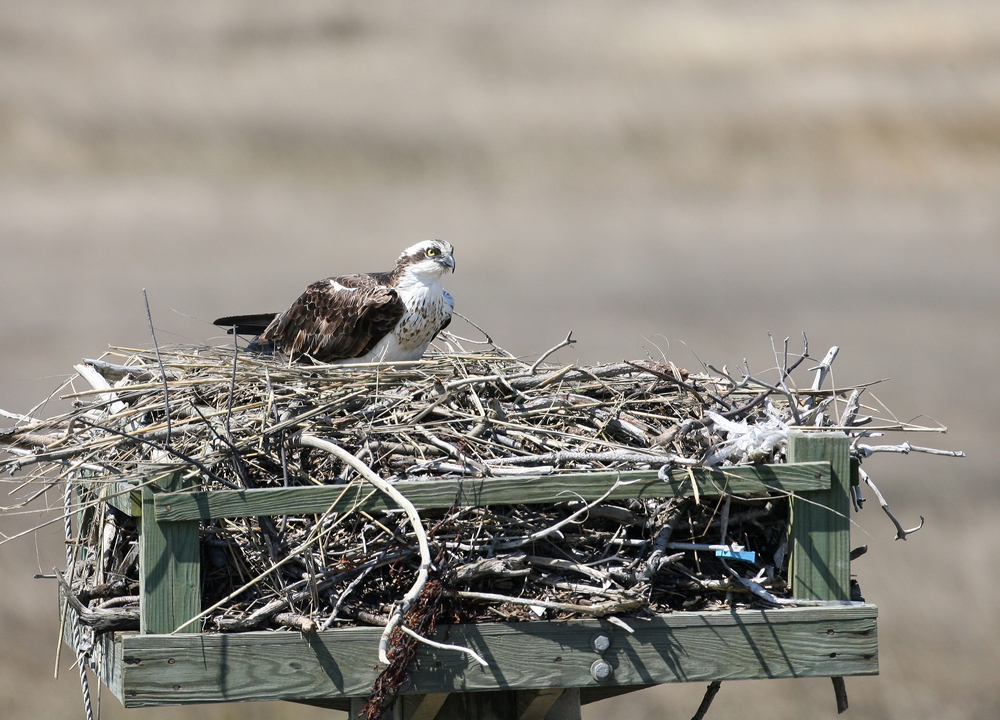
Why Remove this Nest? Why Now?
In their first year as a mated pair, ospreys work together to build their inaugural nest. It’s the male who typically chooses the site and collects materials while the female is responsible for the arrangement of materials to build the nest. A pair’s first nest is relatively small, not much to look at, and less likely to be problematic. But the osprey is a creature of habit and will come back to the same spot each season (especially if they successfully reared chicks) to repair, add to, and defend the same nest.
Generations of maintenance can yield nests of tremendous size and weight, and nests that are more difficult to keep safe and work around. Nests present for many years at a particular location, can cause rot or potentially damage the structure and prevent inspection and repairs. With several hundred osprey and other nests estimated to be on transmission poles and equipment across Maine, it is necessary to prioritize proactive removal of the nests that pose the largest safety concerns for the birds and are most likely to cause widespread power outages.
While power companies are not required to request permission from MDIFW to remove osprey nests or report removals, our biologists provide a consistent resource for consultation on species ecology and current techniques available to increase the probability of a positive outcome for the birds when nest removal is necessary.
Watching Out for Ospreys, and Water
The dangers of transmission lines are not the only threats faced by ospreys in Maine. Nearly completely dependent on fish for food, ospreys are unequivocally linked to the aquatic ecosystem and are sensitive to environmental changes. They can be a useful barometer of aquatic ecosystem health if we’re watching. River herring and river connectivity are critical to healthy fisheries and provide a clean and abundant food source for osprey. You can get involved by learning more through the River Herring Network – Tools for Communities. OspreyWatch is an opportunity for people and communities to collectively monitor ospreys and aquatic health by regularly observing osprey nests. If you know of an active nest near you, you can get started today!
